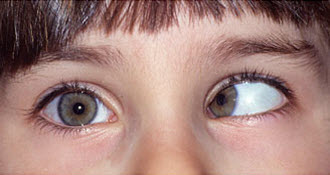Treatments
Phaco Surgery
Phacoemulsification is a modern cataract surgery in which the eye's internal lens is emulsified with an ultrasonic handpiece and aspirated from the eye. Aspirated fluids are replaced with irrigation of balanced salt solution to maintain the anterior chamber.

Glaucoma Specialty
Glaucoma consists of a group of conditions which damage the optic nerve. This nerve is responsible for taking light from the retina and sending impulses to the brain which are perceived as vision. Damage to the optic nerve dramatically diminishes eyesight.

Strabismus
Strabismus, also called crossed eyes, is a condition in which the eyes do not properly align with each other when looking at an object. The eye which is focused on an object can alternate.[3] The condition may be present occasionally or constantly. If present during a large part of childhood, it may result in amblyopia or loss of depth perception.

Medical & Surgical Retina
Strabismus, also called crossed eyes, is a condition in which the eyes do not properly align with each other when looking at an object. The eye which is focused on an object can alternate.[3] The condition may be present occasionally or constantly. If present during a large part of childhood, it may result in amblyopia or loss of depth perception.

Cornea
Although the cornea may look clear and seem to lack substance, it is a highly organized tissue. Unlike most tissues in the body, the cornea contains no blood vessels to nourish or protect it against infection. Instead, the cornea receives its nourishment from tears and the aqueous humor (a fluid in the front part of the eye that lies behind the cornea).

Oculoplastic & Orbit
Oculoplastics, or oculoplastic surgery, includes a wide variety of surgical procedures that deal with the orbit (eye socket), eyelids, tear ducts, and the face.[1] It also deals with the reconstruction of the eye and associated structures.

Pediatric
Pediatrics (also spelled paediatrics or pædiatrics) is the branch of medicine that involves the medical care of infants, children, and adolescents. The American Academy of Pediatrics recommends people be under pediatric care up to the age of 21. A medical doctor who specializes in this area is known as a pediatrician, or paediatrician. The word pediatrics and its cognates mean "healer of children"; they derive from two Greek words: παῖς (pais "child") and ἰατρός (iatros "doctor, healer"). Pediatricians work both in hospitals, particularly those working in its subspecialties such as neonatology, and as primary care physicians.

Refraction
Refraction is the change in direction of wave propagation due to a change in its transmission medium. The phenomenon is explained by the conservation of energy and the conservation of momentum. Owing to the change of medium, the phase velocity of the wave is changed but its frequency remains constant. This is most commonly observed when a wave passes from one medium to another at any angle other than 0° from the normal.
